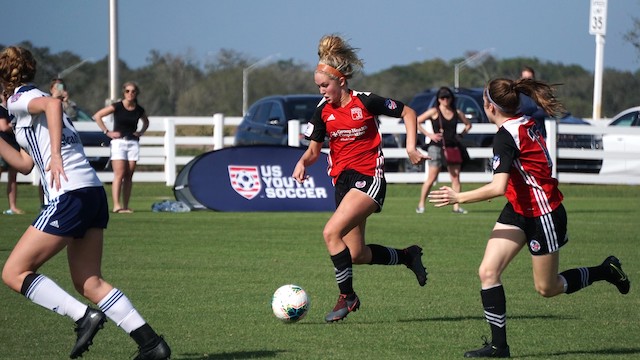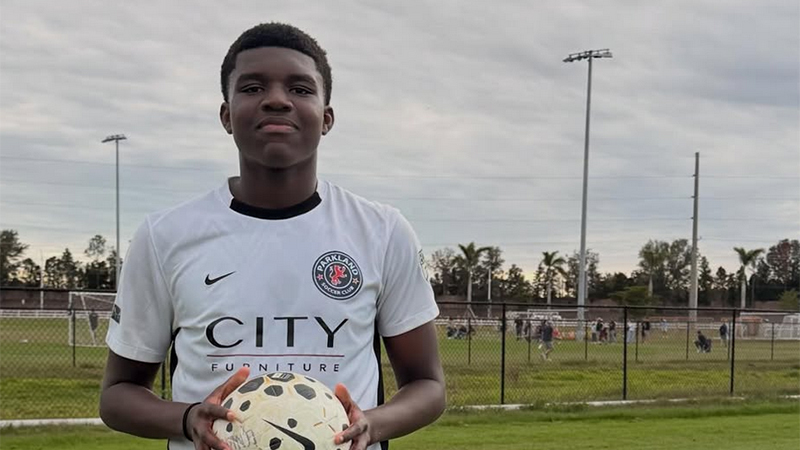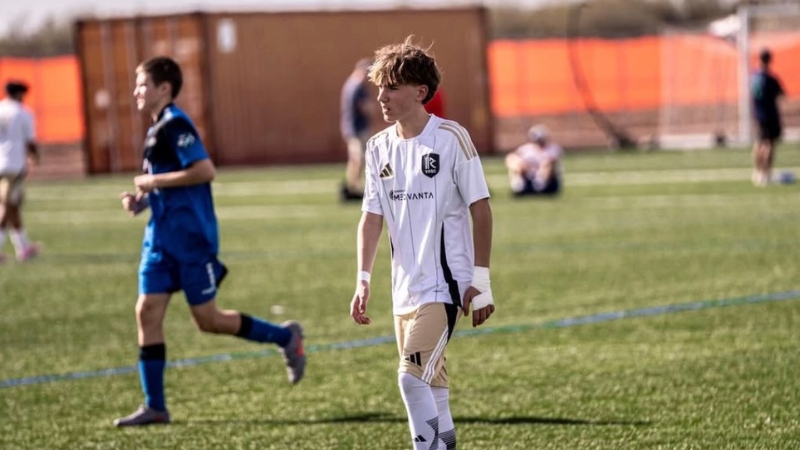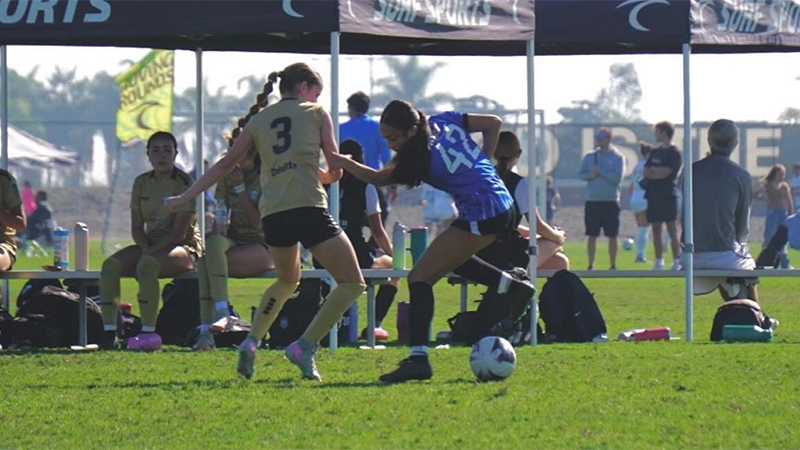USSF’s Guidelines on Returning to Play

U.S. Soccer’s Communications department conducted an interview with U.S. Soccer Chief Medical Officer George Chiampas earlier this month to discuss Play On, the Five Phases to returning to play, and the Federation’s guidelines for players, coaches, and parents.
Many of the key pieces of information are available on the U.S. Soccer website: https://www.ussoccer.com/playon
Chiampas expanded on some key elements though including emphasizing the necessity to spend adequate time in each phase, best practices for parents and coaches, and the responsibility for coaches and clubs.
“U.S. Soccer’s Play On campaign is truly bringing together the best experts across the Federation to provide the best practices and guidelines as soon as our players across the country can return to play amidst COVID-19,” Chiampas said.
The key points of his Q&A with U.S. Soccer Communications Department were emphasizing the guidelines and schedule recommended with the five phases to returning to play, being responsible about shared equipment, and keeping perspective on players enjoyment as we return to the field.
Chiampas was clear throughout the interview that local and state guidelines are the deciding factor for many questions regarding the return to play. The Play On guidelines from U.S. Soccer are there to help assist in a way from clubs and coaches to feel comfortable following these steps in order to prepare players, coaches, and parents returning to the field.
“The Five Phases in regards to Play On encompass from Phase Zero which means zero activity, stay at home. The reason why there is a phase zero is really want everyone to heed the advice of their state and local authorities,” Chiampas said.
Phase One is small group training, which U.S. Soccer recommends a four-six window.
“[It] is extremely important for coaches to follow and parents and players to understand that there is amount of patience required before you really get back to playing competitively,” Chiampas said.
While some states are back to competitive play, there are others that are slowly returning, which is why U.S. Soccer spelled out all Five Phases of the Play On guidelines with different parts of the country at different points of the return.
With Phase One as small group training, Phase Two is full team training.
“Those full team training is still while maintaining social distancing,” Chiampas said. “Still while wearing PPE and masks - short of when they are stepping on the field and being physically active. Making sure they are following all of the mitigation guidelines that have been laid out including screening.”
The screening process includes temperature checks as well as making sure no one is arriving to the field who is sick or been around someone who is sick.
“There is a suggested time of three-to-five weeks,” Chiampas said about the guidelines for how long to stay in Phase Two. “We recognize that we are in warmer weather in the summer, but the symptoms that come along with COVID typically present within 14 days. We want to make sure we’re building not only a period of time so that if something were to occur we’ve addressed and isolated that group, but most importantly we are preventing any injuries.”
Phase Three is playing against local competition (not overnight travel or large tournaments) and Phase Four is back to normal (or as close to normal as possible considering the circumstances).
“When we get to Phase Four, obviously we will all be more educated on COVID-19, more educated about responsibilities to each other and to the public health but hopefully to the sport of soccer,” Chiampas said.
As for when to wear a mask, the U.S. Soccer guidelines recommend PPE for all up until stepping onto the training pitch or on the field for a game.
“In regards to players or coaches wearing masks on the field, in any area of physical activity meaning training or in competition that masks do not need to be worn,” Chiampas said. “The reason why we guided that is in discussions with FIFA and other sports is that the recommendation we don’t want to potentially impair any player’s vision or have any difficult breathing or creating any additional anxiety component. At the same time if a player feels they need to wear a cloth face covering or a mask, we are not saying that they cannot wear it.”
Another suggestion that U.S. Soccer had for youth players is to come to the field already dressed to train so teams can mitigate that possible interaction point.
“Getting dressed before you go to training so that when you arrive your cleats are on, your shinguards are on, so that we can minimize some of those interactions,” Chiampas said.
U.S. Soccer also has recommendations for sanitizing shared equipment - ball, cones, bibs, etc. - which can be found on the PlayOn website.
Getting to and from training can be a challenge for some, which U.S. Soccer recognized with the guidelines, but the Play On guidelines do not recommend carpooling to the field unless you have spent the last 14 days around the other family or person.
“The recommended guidance would be single family carpools are in place unless you have been around that family for over 14 days and no one has had symptoms,” Chiampas said. “The guidance is really that one parent and family members within the household are carpooling. We recognize that may be a challenge especially as some parents may be going back to work, but the reality is that we want no one to get into a car with symptoms and minimize the exposure as best possible. If you do have to carpool, we suggest you wear a mask and minimize the number of young kids and parents in the car to practice as much distancing as possible.”
Many things are going to look different during this time as players and coaches get used to the steps to returning to the field. U.S. Soccer is planning to provide a module with exercises for coaches to help guide them with Phase One and Phase Two as social distancing and small group training becomes a norm.
“They can still go out there and have fun and get better while having social distancing. I think soccer is positioned at a good place that our young kids skillsets, ability to get better, touches on the ball can take place in these individualized trainings.”
U.S. Soccer’s Chief Medical Officer did offer some words of caution though as not everyone has the same enthusiasm level to get back on the field, and there are some more concerned than others when it comes to rejoining a group activity.
“It’s extremely important that no child or player is feeling pressured or anxious to participate,” Chiampas said. “What we want is the youth players to be very comfortable. We want our clubs and coaches to provide the right environment for them.”
Ultimately, these guidelines are in place to help protect all of those involved in the sport so they can return to the field responsibly.
“Our purpose is really to be a guide and provide really good recommendations for our clubs, coaches, players, referees so collectively there is a resource that everyone can look to and implement but implement in a very responsible way so that our players, coaches are protected,” Chiampas said.
Headlines
- Recruiting Roundup: January 5-11
- Tracking Division I Coaching Changes
- 2026 Women's Division I Transfer Tracker
-
Ten MLS Next AD U15 Players to Know

-
ECNL Girls FL: Under-19 Players to Watch

-
Commitments: Valuing Virginia Tech

- ECNL Girls FL: Selection Game Rosters
-
Ten MLS Next AD U14 Players to Know

-
Player Rankings Spotlight: 2028 Boys

- U17 WNT Roster Name for Spain Training Camp



